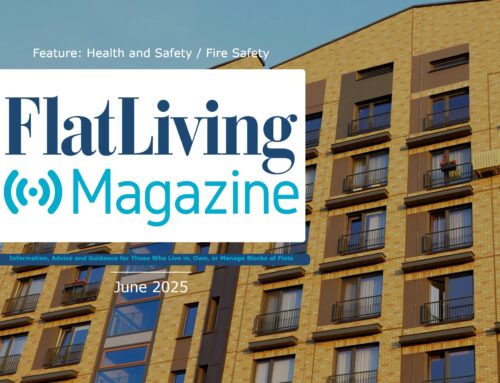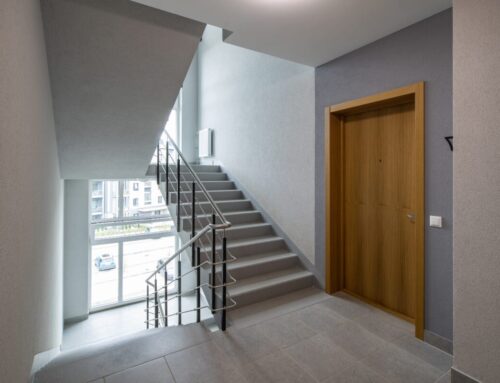Section 20 – is it reasonable?
Nicola McAndrew from Residentsline investigates
Please note that for the purposes of this article, any reference to the “landlord” may be substituted for the Freeholder, Head Lessee, Residents’ Management Company (RMC) or Right To Manage (RTM) company – in short, the person or organisation that enforces the service charge payment. Similarly, any reference to the “tenant” will also be applicable to a leaseholder.
Section 20 consultation procedure
If any major works (otherwise known as ‘qualifying works’) are required for a block of flats, the cost will normally be recoverable from the tenants. Under the terms of their lease, this cost will normally be added on top of their annual service charge payment – it may also be fully or partly covered by a reserve or ‘sinking’ fund, dependent on the price of the works and the amount available in the fund.
However, under Section 20 of the Landlord and Tenant Act 1985, if this charge exceeds £250 per tenant the landlord must follow a consultation procedure. This is referred to as a Section 20 consultation, and normally takes place in the form of three notices. The purpose of the S20 consultation process is to be certain that no leaseholder is prejudiced by the process.
Notice of Intention to Carry Out Works
This notice is the first part of the three-stage consultation procedure to which landlords must comply. This notice must describe what works are going to take place, as well as explaining why they are necessary. Landlords must also give tenants a 30-day window of opportunity to respond to the notice and, if they choose to do so, nominate a contractor for the building works.
Notice of Estimates
The second notification that must be sent is the Notice of Estimates – this entails another 30-day notice to be sent to the tenants detailing the estimates that the landlord has obtained. It is important to note that at least one of these estimates must be from a contractor who is entirely independent of the landlord. Also, at least one of these estimates must be obtained from nominations made by the tenants in the previous notice (if any). Tenants can use this second 30-day notice to send any observations, in writing, to the landlord. The landlord should also provide a reasonable time and place in which the tenants can inspect the estimates obtained.
Notice of Award of Contract
The final stage of the Section 20 consultation procedure is the Notice of Award of Contract. This should be sent to the tenants within 21 days of entering into a contract, and must summarise the tenants’ previous observations in regard to the Notice of Estimates. However, this notice does not need to be sent if either;
- the contract has been undertaken by a nominated contractor; or,
- the contract has been undertaken by the contractor with the cheapest estimate.
What happens when this procedure isn’t followed?
Failure to meet the requirements of the Section 20 consultation procedure will often result in a legal dispute. Take, for example, the Ashleigh Court v De-Nuccio & Ors case from 2015.
The Right to Manage (RTM) company had provided both the Notice of Intention and the Notice of Estimates. However, in the latter notice, the RTM company had failed to provide a reasonable time and place for inspection of the estimates. Firstly, they only allowed leaseholders to inspect the estimates between 9am-12pm on weekdays, and even then requested that tenants were to give 48 hours’ prior notice. The RTM company did not provide sufficient contact details nor give out their registered address, meaning leaseholders were unable to access or inspect any of the relevant documentation.
The First Tier Tribunal, upon reviewing the case, ruled that the RTM company had failed to uphold the requirements of the Section 20 consultation. This decision was upheld by the Upper Tribunal, and thus rendered the RTM company only able to recover a maximum of £250 per leaseholder.
The FTT ruled against the RTM company on the basis that they had failed to provide clear contact details and offer a ‘reasonable’ time for estimates inspection. Initially, the FFT had stated the time and place the RTM made available for inspections was not “sufficiently adequate”. However, according to the Royal institute of Chartered Surveyors, it was deemed that “the question which should have been asked pursuant to the regulations was whether the time and place specified for inspection were reasonable” as opposed to “sufficiently adequate”.
What is reasonable?
This poses the somewhat abstract question as to what can be considered ‘reasonable’ in terms of the time and place that needs to be made available for tenants to access documents. Should inspections be offered within the standard 9am-5pm working hours? In the evenings? Mornings? Or should there be no restrictions imposed at all, instead allowing tenants to access documents at any time?
Logically, a ‘reasonable’ course of action would be to avoid the mistakes of the RTM company, i.e. having no 48-hour notice restriction prior to inspection, supplying clear contact details, and providing a clear address.
Imposing a ‘reasonable’ time and place for document access is where it gets slightly trickier. Realistically, there is no specific answer. It is impossible for one piece of legislation to dictate a specific time and place for every block of flats undergoing major works – this must be the responsibility of the landlord or managing company. And whilst having 48 hours’ notice prior to inspection is an unnecessary requirement, it remains to be said that there is no set algorithm to which RTM companies or landlords can refer when deciding what availability is ‘reasonable’.
Realistically, a retirement block of flats and a block with mostly working families will have different interpretations of what constitutes a ‘reasonable’ time and place to access relevant documentation. Likewise, it is difficult to determine the most ‘reasonable’ availability for tenants who are away from the property for lengthy periods of time for travel or work.
Charlotte Collins, a solicitor from Realty Law describes the question of ‘reasonableness’ as “subjective”. She states that “reasonableness is also going to depend upon the documents which are to be inspected. If there are many documents then it would not be reasonable to send copies to multiple leaseholders. If, however, there are only a few leaseholders who cannot come to the offices to inspect then it would probably be reasonable to send copies to them or offer to provide copies for a small cost.”
In short, a ‘reasonable’ time and place to access documentation must be determined by a variety of factors; for example, the most accommodating time slot available; the address given to the tenants; the documents to be inspected; and, the availability of the tenants themselves. To reiterate the point made by Collins, this decision is entirely subjective. And, whilst ‘reasonableness’ is difficult to address under one piece of legislation; it remains to be said that any actions deemed as ‘unreasonable’ will be legally addressed. The critical factor is always to eliminate any prejudice to the leaseholder so any action taken should always be taken with this in mind, and, as shown by the Ashleigh Court v De-Nuccio & Ors case, Section 20 consultation procedures should be taken very seriously – to a reasonable standard, of course.
Residentsline’s sole focus has always been insurance for flats. Today, 22 years on, Residentsline has grown to be recognised as understanding the intricacies, risks and requirements that are unique to the flats market.
Visit www.residentsline.co.uk or call 0800 281 235




Leave A Comment